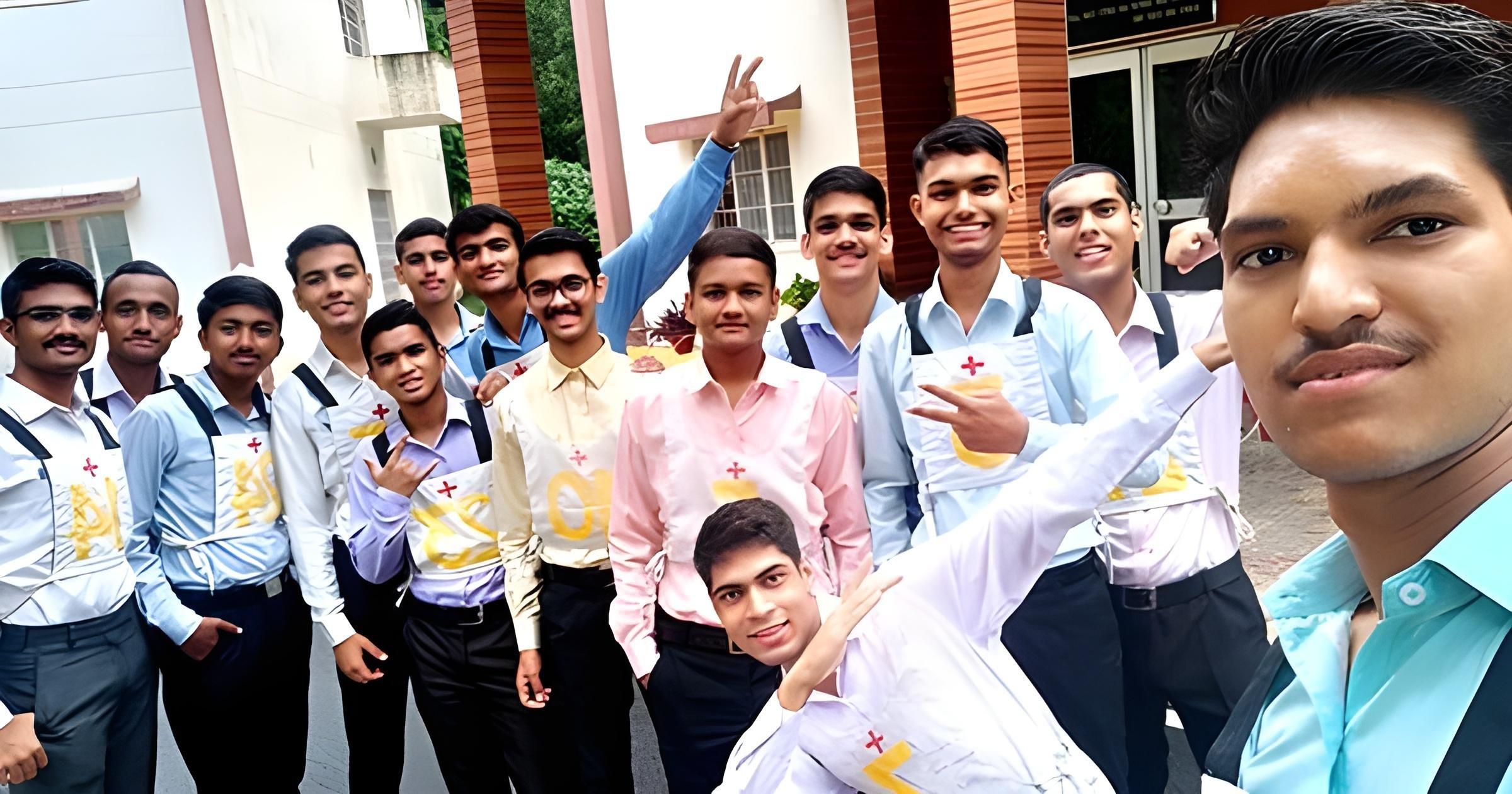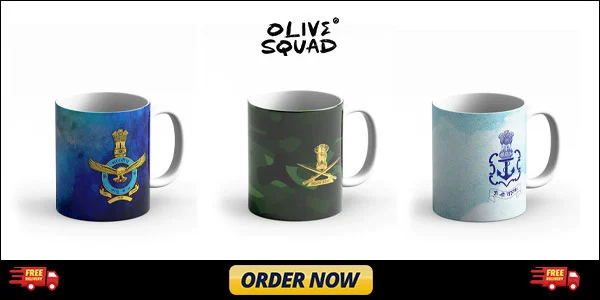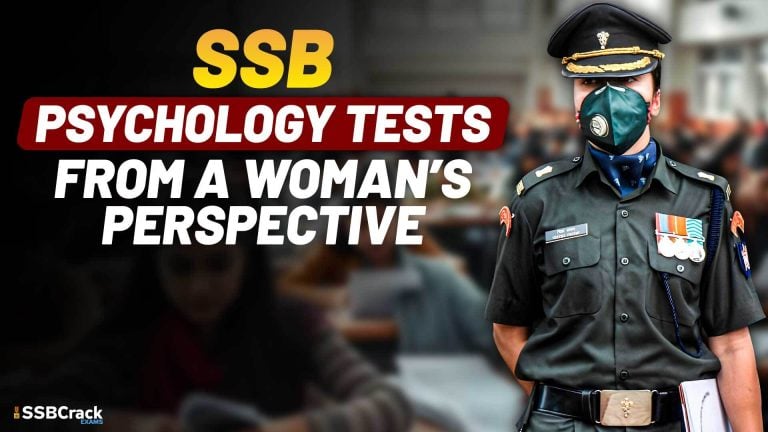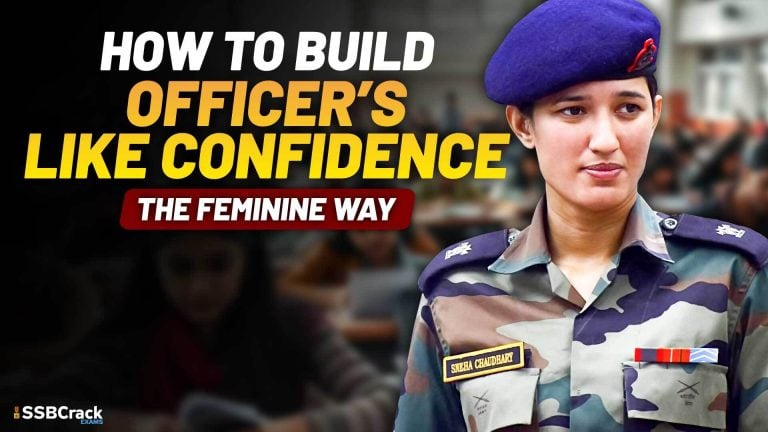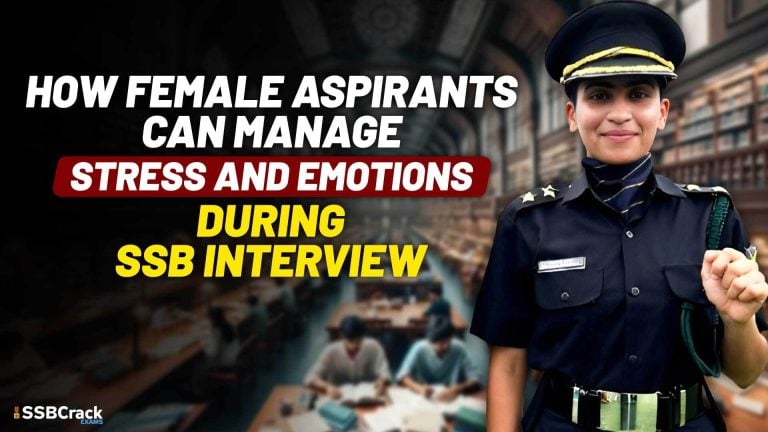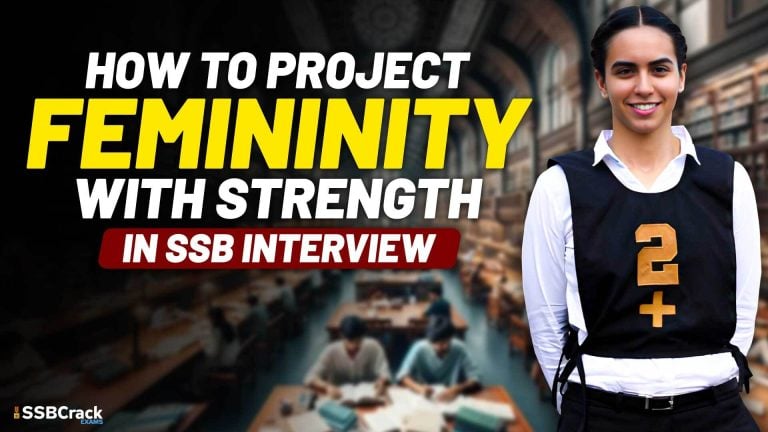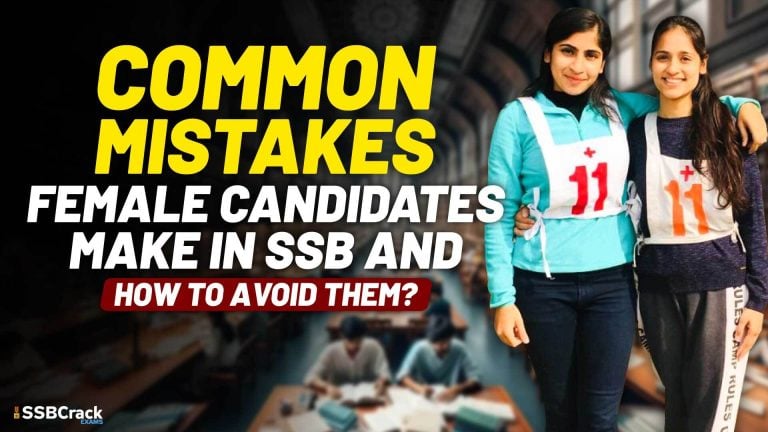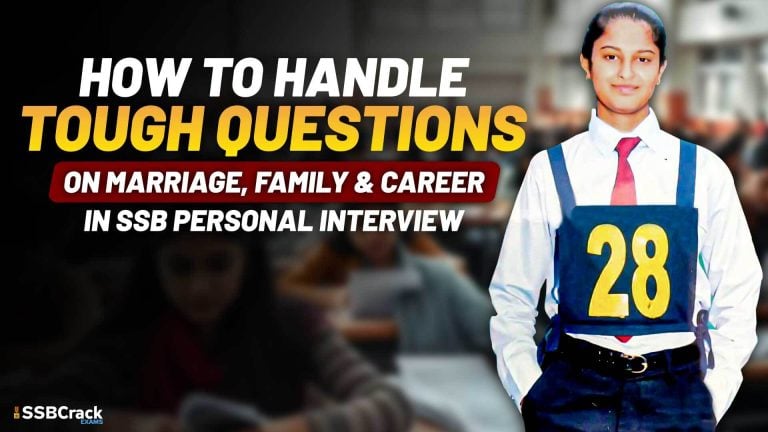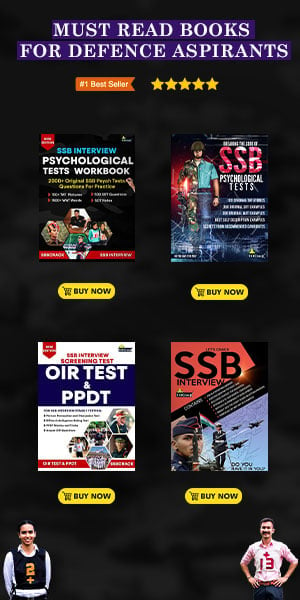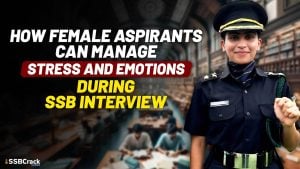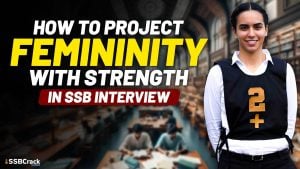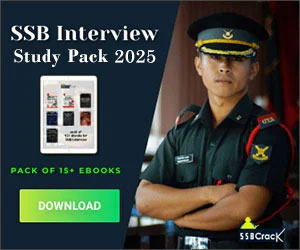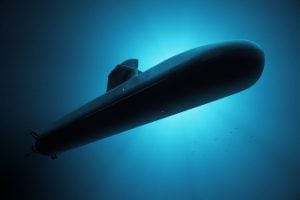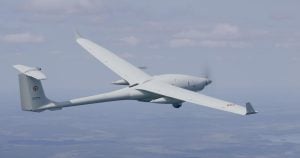As SSB centers reopen across the country, I want to wish all candidates the best of luck and share my experience to help you prepare. Having appeared for six SSBs before my graduation, I’ve compiled 50 important questions that were asked during my interviews. These questions span various domains including personal background, family relationships, education, extracurricular activities, current affairs, armed forces knowledge, and geographical awareness.
This comprehensive guide includes not just the questions but also well-crafted sample answers to help you prepare effectively. Remember, authenticity is key during your SSB interview, so use these as guidelines to formulate your own honest responses.
Personal Background
Question 1: What is the meaning of your name?
Sample Answer: “My name Arjun is derived from Sanskrit. It means ‘bright,’ ‘silver,’ or ‘white.’ In the Mahabharata, Arjun was a skilled archer and warrior known for his focus, discipline, and moral integrity. My parents chose this name hoping I would embody these qualities, and I strive to live up to its meaning through my dedication and commitment to excellence.”
Question 2: Tell me about your strengths and weaknesses. (Approx 2-5)
Sample Answer: “My key strengths include:
- Discipline: I maintain a structured daily routine which helps me balance academics, physical fitness, and personal development.
- Adaptability: I quickly adjust to new environments and challenges, which I demonstrated during my NCC camps in different terrains.
- Team leadership: As captain of my school basketball team, I successfully motivated my teammates to practice regularly, resulting in our first regional championship.
My weaknesses that I’m actively working on are:
- Perfectionism: I sometimes spend too much time trying to perfect tasks. I’m learning to balance quality with efficiency.
- Public speaking anxiety: Though I’ve improved significantly through debate competitions, I still experience initial nervousness which I manage through preparation and breathing exercises.”
Question 3: Why do you want to be a part of Indian armed forces as an officer?
Sample Answer: “I aspire to join the Indian Armed Forces as an officer because I feel a profound sense of duty toward my nation. Growing up in a border state, I’ve witnessed firsthand the sacrifice and dedication of our forces. I’m drawn to the disciplined lifestyle, the opportunity to lead from the front, and the chance to serve in challenging environments. The forces offer a unique platform where my technical education can be applied to solve strategic challenges while leading a purposeful life dedicated to protecting our country’s sovereignty.”
Question 4: What qualities make you fit for Indian armed forces?
Sample Answer: “I believe several qualities make me suitable for the armed forces. My physical fitness is consistently above average—I run 5km daily in under 25 minutes. I’ve developed mental resilience through competitive sports, facing both victories and defeats with equanimity. My problem-solving abilities, honed through engineering projects, allow me to think clearly under pressure. My experience leading my college technical team taught me effective communication and personnel management. Finally, I’ve always prioritized integrity and ethical conduct, values that are foundational to military service.”
Social Relationships
Question 5: How many friends and good friends do you have?
Sample Answer: “I have a wide circle of about 20-25 friends with whom I interact regularly in college and my neighborhood. Among them, I consider 5 as close friends with whom I share deeper bonds. These relationships vary from childhood friendships that have stood the test of time to newer connections formed through shared interests like mountaineering and robotics. I believe in quality over quantity when it comes to friendships.”
Question 6: What qualities do you see in someone before making them your friends?
Sample Answer: “When forming friendships, I value honesty and authenticity above all—I appreciate people who remain true to themselves and others. I look for reliability, as mutual dependability builds trust. I’m drawn to individuals who demonstrate empathy toward others’ situations. I also value intellectual curiosity, as I enjoy learning from friends with diverse perspectives. Finally, I appreciate a positive outlook, as friends who encourage growth and see opportunities in challenges help create a supportive environment for mutual development.”
Question 7: Who is your best friend? Why did you choose him as your best friend, and how do you spend time with him?
Sample Answer: “My best friend is Rahul, whom I’ve known since 6th standard. Our friendship developed naturally due to our shared values of honesty and mutual respect. Rahul consistently demonstrates loyalty, offering constructive criticism when needed while standing by me during challenges. We spend time playing basketball, working on technical projects, and occasionally trekking in nearby hills. Our discussions range from career aspirations to current affairs, pushing each other to develop broader perspectives. What I value most is our ability to communicate openly without judgment.”
Academic Background
Question 8: Can you tell me the name of this plane shown in the calendar?
Sample Answer: “That’s the HAL Tejas, India’s indigenous light combat aircraft. It’s a single-engine, delta wing, multirole light fighter designed by the Aeronautical Development Agency and manufactured by Hindustan Aeronautics Limited. The Tejas represents India’s self-reliance in military aviation technology and has been inducted into the Indian Air Force as a replacement for the MiG-21.”
Question 9: Why were you not selected as the head boy of your school?
Sample Answer: “I was nominated for the position but ultimately another candidate was selected. The selection committee likely recognized that Rohit, who was chosen, had strengths complementary to mine. While I excelled in academic initiatives and sports, Rohit had more experience in cultural activities and community outreach. I respected the decision and collaborated closely with him as the Sports Captain instead. This experience taught me that leadership isn’t confined to formal positions—it’s about making positive contributions regardless of title. The experience also helped me develop humility and adaptability.”
Question 10: Which is your favorite subject, and why?
Sample Answer: “Physics is my favorite subject because it explains the fundamental principles governing our universe. I’m fascinated by how elegant mathematical formulas can describe complex physical phenomena. My interest deepened when I applied theoretical concepts to build a working model of a hydraulic bridge for our school science exhibition. The problem-solving approach in physics aligns with military strategic thinking—analyzing situations from first principles, identifying variables, and developing systematic solutions. This analytical mindset will be valuable as an officer when facing tactical challenges.”
Question 11: As all of us have some ideal in our life, may I know yours and why you think he or she is your idol?
Sample Answer: “My idol is Dr. APJ Abdul Kalam. What inspires me most about him is how he balanced scientific excellence with profound humanity. Despite rising from humble beginnings to becoming India’s ‘Missile Man’ and later President, he maintained simplicity and integrity throughout his life. His vision of using technology for national security while promoting peace resonates deeply with me. His emphasis on youth development through his ‘Wings of Fire’ and interactions with students shows his commitment to nation-building beyond his official duties. I try to emulate his work ethic, his lifelong learning approach, and his ability to inspire others through personal example.”
Question 12: What is your favorite subject, and why? (This appears to be a repeat of Question 10)
Question 13: Which topic do you like the most in mathematics?
Sample Answer: “Calculus is my favorite topic in mathematics because it provides tools to understand change and optimization—concepts relevant to both engineering and military strategy. I’m particularly drawn to differential equations as they model real-world scenarios from missile trajectories to resource optimization problems. During my engineering project on automated drone navigation, calculus principles were essential for developing path optimization algorithms. I find that calculus cultivates a mindset of breaking complex problems into manageable components—a skill directly applicable to tactical decision-making in the armed forces.”
Question 14: Can you tell me the three uses/significance of trigonometry?
Sample Answer: “Trigonometry has several significant applications. First, in navigation and artillery, it’s essential for calculating distances, angles of elevation, and target acquisition—crucial skills for military operations. Second, in engineering, trigonometric principles enable the design of structures that can withstand various forces, which I applied when designing a truss bridge model that won our college competition. Third, in satellite communications and radar systems, trigonometry helps calculate signal paths and positioning, technologies central to modern defence systems. These applications demonstrate why trigonometry remains fundamental to both civil engineering and military science.”
Spatial Awareness and Estimation
Question 15: Tell me the approximate height, length, and width of the room/tiles of the interview room.
Sample Answer: “Based on my observation, this room appears to be approximately 14 feet in length, 12 feet in width, and has a ceiling height of about 10 feet. The floor tiles seem to be standard 2 feet by 2 feet squares, with roughly 6 tiles along the width and 7 tiles along the length. I notice the ceiling is about 5 feet higher than the door frame, which is typically 7 feet tall, accounting for my height estimate. These are approximations based on visual assessment and my own height as a reference point.”
Question 16: Can you guess the approximate volume of water in the glass on my table?
Sample Answer: “The glass appears to be a standard cylindrical tumbler, approximately 3 inches in diameter and filled to about 2 inches from the bottom. Using the formula for cylindrical volume (πr²h), I estimate the volume to be approximately π × (1.5)² × 2 = π × 2.25 × 2 ≈ 14 cubic inches. Converting to a more common measure, that’s roughly 230 milliliters or just under 8 fluid ounces of water.”
Current Affairs and Geopolitical Knowledge
Question 17: Tell me any five national and international news.
Sample Answer: “Recent significant news includes:
- India’s successful testing of the hypersonic technology demonstrator vehicle, strengthening our strategic capabilities.
- The implementation of the National Education Policy 2020, bringing comprehensive reforms to our education system.
- India’s non-permanent membership in the UN Security Council for 2021-22, enhancing our global diplomatic influence.
- The ongoing border tensions with China along the Line of Actual Control in Eastern Ladakh.
- Internationally, the Abraham Accords signed between Israel and several Arab nations, reshaping Middle Eastern geopolitics.”
Question 18: What is the South China Sea, and where is it located. Also, tell me its significance.
Sample Answer: “The South China Sea is a marginal sea situated in the Western Pacific Ocean, bounded by China, Vietnam, Malaysia, Brunei, the Philippines, and Taiwan. Its strategic significance is multifaceted: economically, it contains vital shipping lanes through which approximately $3.4 trillion in global trade passes annually. Regarding resources, it holds significant oil and natural gas reserves, estimated at 11 billion barrels of oil and 190 trillion cubic feet of natural gas. Geopolitically, it’s a contested region with overlapping territorial claims, particularly China’s ‘nine-dash line’ claim that encompasses nearly 90% of the sea, creating tensions with neighboring countries and involving major powers like the US that advocate for freedom of navigation.”
Question 19: Can you name the states that surround Madhya Pradesh?
Sample Answer: “Madhya Pradesh is surrounded by seven states: Uttar Pradesh to the northeast, Chhattisgarh to the east, Maharashtra to the south, Gujarat to the west, Rajasthan to the northwest, and small portions of Jharkhand and Bihar to the eastern edge. This central location has historically made Madhya Pradesh a cultural and strategic crossroads, earning it the nickname ‘Heart of India.'”
Question 20: Name the south Indian states.
Sample Answer: “The five South Indian states are Tamil Nadu, Kerala, Karnataka, Andhra Pradesh, and Telangana. Additionally, the union territories of Puducherry and Lakshadweep are also considered part of South India. These states are unified by certain cultural elements including Dravidian languages, similar cuisines featuring rice as a staple, and distinctive architectural styles, though each state maintains its unique cultural identity.”
Question 21: What do you think is the currency used in the region of POK?
Sample Answer: “Pakistan-occupied Kashmir (POK) uses the Pakistani Rupee as its currency. While India maintains that the entire region is an integral part of Indian territory under illegal occupation, the day-to-day administration is currently under Pakistani control, hence their currency is in circulation there. This remains one of the complex issues in Indo-Pakistan relations stemming from the disputes following partition.”
Question 22: Tell me something about CPEC. What are the names of the ports it joins?
Sample Answer: “The China-Pakistan Economic Corridor (CPEC) is a flagship project under China’s Belt and Road Initiative involving approximately $62 billion in investments. It connects Gwadar Port in Pakistan’s Balochistan province to Kashgar in China’s Xinjiang region, spanning about 2,700 kilometers. The project includes transportation infrastructure, energy projects, and special economic zones. From India’s perspective, CPEC is controversial as it passes through Pakistan-occupied Kashmir, which India considers its sovereign territory. Strategically, it provides China access to the Arabian Sea, potentially enhancing their maritime capabilities in a region traditionally dominated by India and Western naval powers.”
Question 23: Which oceans do you have to cross if you want to go from India to America through the water bodies route?
Sample Answer: “Traveling from India to America by sea would require crossing three major bodies of water. Starting from India’s western coast, one would first navigate the Arabian Sea, then pass through the Indian Ocean. After going around the southern tip of Africa (or alternatively through the Suez Canal, Mediterranean Sea, and Atlantic), one would enter the Atlantic Ocean. Finally, depending on whether the destination is on America’s east or west coast, one would either arrive directly or need to pass through the Panama Canal to reach the Pacific Ocean. This demonstrates the strategic importance of maritime chokepoints like the Suez Canal and Panama Canal in global navigation.”
Hobbies and Interests
Question 24: Who is your favorite singer, and from where does he belong?
Sample Answer: “A.R. Rahman is my favorite singer and music composer. He hails from Chennai, Tamil Nadu. What I admire about Rahman beyond his musical talent is his journey of overcoming personal hardships, his dedication to continuous innovation, and his ability to blend traditional Indian classical elements with contemporary global sounds. His international recognition, including two Academy Awards, demonstrates how Indian artists can achieve global excellence while maintaining cultural roots—a philosophy I hope to apply in my own career.”
Question 25: What type of songs do you like, and which one is your favorite song.
Sample Answer: “I appreciate songs that combine meaningful lyrics with compelling musical composition. I particularly enjoy fusion music that blends classical Indian elements with contemporary styles. My favorite song is ‘Vande Mataram’ composed by A.R. Rahman for the album ‘Maa Tujhe Salaam.’ The composition’s emotional depth, patriotic theme, and innovative arrangement of classical ragas with modern orchestration resonates deeply with me. The song’s message of national unity and reverence for our motherland aligns with the values that attract me to the armed forces.”
Military Knowledge
Question 26: What is the motto of artillery?
Sample Answer: “The motto of the Regiment of Artillery of the Indian Army is ‘Sarvatra Izzat-O-Iqbal,’ which translates to ‘Everywhere with Honour and Glory.’ This motto reflects the Artillery’s crucial role in providing firepower across diverse battlefields and its commitment to upholding the highest standards of military excellence. The Artillery is often referred to as the ‘God of War’ due to its decisive impact on battlefield outcomes.”
Family Dynamics
Question 27: Do you have fights with your brothers, and if yes, what are the reasons behind the fights?
Sample Answer: “Yes, my brother and I occasionally have disagreements, which I believe is natural in any close relationship. Our differences typically arise from sharing resources like our computer for studies or diverging opinions on family decisions. However, these disagreements are always respectful and resolved through discussion. I’ve noticed that our different perspectives often lead to better decisions when combined. For instance, when planning our father’s retirement celebration, my practical approach complemented my brother’s creative ideas, resulting in a more thoughtful event. These experiences have taught me conflict resolution skills applicable to team leadership in the armed forces.”
Sports Knowledge
Question 28: What are the measurements of the basketball court?
Sample Answer: “A standard basketball court measures 94 feet (28.65 meters) in length and 50 feet (15.24 meters) in width for NBA and international FIBA competitions. The free-throw line is positioned 15 feet (4.57 meters) from the backboard, and the three-point line is 23 feet 9 inches (7.24 meters) from the center of the basket for NBA courts. The rim is positioned at a height of 10 feet (3.05 meters) from the floor. My experience as a basketball team captain helped develop my spatial awareness and ability to make quick tactical decisions under pressure—skills that transfer well to military scenarios.”
Locality and Travel
Question 29: Tell me something about the place or the locality where do you live.
Sample Answer: “I live in Indore, Madhya Pradesh, a city known for combining industrial development with cultural heritage. Our locality, Vijay Nagar, is a well-planned residential area with educational institutions, healthcare facilities, and recreational spaces within walking distance. The community is diverse, hosting families from various professional backgrounds, creating a multicultural environment. The area has active residents’ associations that organize cultural events and community service initiatives. Growing up here exposed me to different perspectives and instilled civic responsibility—I’ve participated in local cleanliness drives and helped organize a neighborhood security system. These experiences have reinforced my belief in the importance of community engagement alongside professional pursuits.”
Question 30: What are the various tourist places in Gwalior?
Sample Answer: “Gwalior offers several significant historical and cultural attractions. The most prominent is Gwalior Fort, an 8th-century hill fortress featuring impressive architecture and the Gujari Mahal Archaeological Museum. The Jai Vilas Palace houses the Scindia Museum, displaying royal artifacts and the world’s heaviest chandeliers. The city is renowned for its classical music tradition, celebrated at the Tansen Music Festival near Tansen’s tomb. Other notable sites include the Sun Temple (a replica of Konark), the ornate Saas-Bahu temples, and Man Singh Palace with its unique blue stonework. Having visited these sites during an NCC camp, I appreciate how they showcase India’s rich architectural and cultural heritage.”
Question 31: How did you travel to the SSB center? What were the significant stations you found in between, and how did you pass your time on the train?
Sample Answer: “I traveled from Indore to the SSB center by train, covering approximately 800 kilometers over 14 hours. Notable stations en route included Bhopal, Jhansi, and Agra Cantt, each representing important historical and administrative centers. During the journey, I divided my time productively between preparation and relaxation. I reviewed my personal dossier and current affairs notes for 3-4 hours, practiced mental ability questions for 2 hours, and engaged in conversations with fellow candidates, exchanging experiences and insights. I also observed the changing landscapes and agricultural patterns across states, which gave me a better appreciation of India’s geographical diversity. This journey itself became a learning experience in adaptability and time management.”
Problem-Solving Approach
Question 32: Whenever you go through any problem, who do you concern, or how do you solve it?
Sample Answer: “My approach to problem-solving follows a systematic pattern. For academic or technical challenges, I first attempt to resolve them independently by researching and analyzing possible solutions. When facing personal dilemmas requiring perspective, I discuss them with my father, whose analytical thinking helps clarify options, or my mother, who offers emotional intelligence and practical wisdom. For career-related decisions, I’ve consulted my physics professor who mentors students interested in defence careers. I believe effective problem-solving requires both self-reliance and the wisdom to seek guidance when appropriate. This balanced approach has helped me develop decision-making skills while remaining open to expert input—a crucial quality for military officers who must be decisive yet collaborative.”
Test Preparation and Self-Improvement
Question 33: What are the various competitive exams that you have appeared for, and what were the results in them?
Sample Answer: “I’ve appeared for several competitive examinations as part of my preparation journey. I qualified in the NDA written exam twice, reaching the SSB stage. I also took the UPSC CDS examination once, clearing the written component. In academic competitions, I ranked within the top 5% in the National Science Olympiad and secured a state-level rank of 120 in the Mathematics Olympiad. While I didn’t clear my first attempts at the SSB, each experience provided valuable insights that helped me improve. These examinations have strengthened my aptitude for analytical thinking and time management—both essential for military service.”
Question 34: As you have failed in some SSBs before, may I know the causes of your failure in previous SSBs, and what have you done this time to avoid them?
Sample Answer: “My previous SSB attempts revealed specific areas needing improvement. Initially, I struggled with articulating my thoughts clearly during the personal interview, often providing generic rather than specific examples. To address this, I’ve practiced structured responses using the STAR method (Situation, Task, Action, Result) and maintained a journal of personal experiences demonstrating officer-like qualities.
I also identified that my group task participation wasn’t balanced—I either dominated discussions or hesitated to contribute. I’ve since joined debate clubs and volunteer organizations to practice collaborative leadership, learning when to lead and when to support team members.
Physical fitness was another area for improvement—I’ve intensified my regimen to include 5km runs, strength training, and obstacle courses, improving my endurance significantly.
Finally, I’ve enhanced my current affairs knowledge through daily reading and discussion groups. These deliberate improvements reflect my commitment to meeting the standards expected of an officer candidate.”
Question 35: How do your hobbies impact on your personality?
Sample Answer: “My hobbies have significantly shaped my personality and skills. Long-distance running has instilled perseverance and mental toughness—completing a half-marathon taught me to push beyond perceived limitations. Photography has enhanced my attention to detail and patience, waiting hours sometimes for the perfect wildlife shot in our local sanctuary. Chess has developed my strategic thinking and ability to anticipate consequences of decisions several moves ahead. Book discussions with my reading group have broadened my perspectives and improved my communication skills. Together, these hobbies have cultivated a balanced personality combining physical endurance, mental acuity, creativity, and social engagement—all attributes that would serve me well as an officer in the armed forces.”
General Knowledge
Question 36: Who is the Chief Editor of Times of India? (As I used to read it)
Sample Answer: “Jaideep Bose serves as the Editorial Director of The Times of India, overseeing the editorial direction of India’s largest English-language newspaper. Under his leadership, the publication has maintained its position as one of the most influential media outlets in the country, balancing traditional journalism with digital innovation. Reading newspapers like TOI has been instrumental in my preparation, helping me develop informed opinions on national and international affairs—knowledge essential for an officer who must understand the geopolitical context of military operations.”
Question 37: Why do birds not get shocked while sitting on the wires containing high electricity?
Sample Answer: “Birds don’t get electrocuted on power lines because they don’t complete an electrical circuit. Electricity flows through conductors seeking the path of least resistance to ground. When a bird sits on a single wire, it’s at the same electrical potential throughout its body, and current doesn’t flow through it. Electrocution would only occur if the bird simultaneously touched another wire with a different potential or a grounded object, creating a path for current. This demonstrates the practical application of Ohm’s Law and circuit principles. Understanding such scientific concepts is valuable in the armed forces, where technical knowledge of equipment safety and operation can be critical.”
Daily Routine and Time Management
Question 38: What is your timetable on working days?
Sample Answer: “My typical weekday begins at 5:30 AM with a 5km run followed by basic strength exercises. From 7:30 to 8:30 AM, I prepare for college while reviewing current affairs. Classes occupy 9 AM to 4 PM, with breaks utilized for group discussions with peers on academic concepts. Between 4:30 and 6:30 PM, I participate in basketball practice or NCC activities three days a week, and community service through our college NSS unit on other days. Evening hours from 7 to 9:30 PM are dedicated to focused study and project work. Before sleeping by 11 PM, I spend time reading books on military history or leadership. This structured routine has helped me develop discipline and effective time management—skills I recognize as essential for military life.”
Question 39: What is your timetable on holiday?
Sample Answer: “My holiday routine maintains core discipline while allowing flexibility for personal development. I still wake by 6 AM for physical training, though extending it to include swimming or hiking. Morning hours from 8 to 11 AM are reserved for skill development—currently I’m learning basic German and improving my map-reading skills. Midday is family time, often helping with household responsibilities or joining family outings. Afternoons typically involve meeting friends for sports or working on our robotics project. Evenings include dedicated reading on military affairs and occasionally volunteering at the local veterans’ support group. This balanced approach ensures continued growth across physical, intellectual, and social dimensions even during leisure periods—reflecting my understanding that an officer’s development is continuous.”
Question 40: What types of preparations have you done this time for the SSB?
Sample Answer: “My preparation for this SSB has been comprehensive and targeted. Physically, I’ve followed a structured regimen of running, swimming, and strength training to build the stamina required for the ground tasks. For psychological preparation, I’ve practiced situational judgment tests and sought feedback from seniors who successfully cleared the SSB. I’ve improved my communication skills through mock interviews and group discussions with college peers. For knowledge enhancement, I’ve maintained a current affairs journal, studied military organization structures, and read autobiographies of military leaders. I’ve also worked on specific technical skills like map reading, obstacle navigation, and basic first aid. This holistic approach addresses the physical, psychological, intellectual, and social dimensions assessed during the SSB process.”
Question 41: How much distance do you run in the morning and in how much time?
Sample Answer: “I run 5 kilometers every morning, completing it in approximately 22 minutes, which translates to about 4:24 minutes per kilometer. I’ve gradually improved this time over the past year through consistent training. My routine includes two days of interval training, alternating between sprints and jogging, and one day of longer 8km runs at a steady pace to build endurance. I also incorporate uphill runs once weekly to build strength. Physical fitness is non-negotiable for military service, and running specifically builds the cardiovascular endurance, mental toughness, and discipline needed in field conditions.”
Question 42: What do you do in your free time?
Sample Answer: “I use my free time purposefully across several activities. Reading military history and international relations helps broaden my understanding of strategic affairs—I recently completed ‘India’s Wars’ by Air Vice Marshal Arjun Subramaniam. I engage in community service through our college NSS unit, currently teaching basic computer skills at a nearby government school. For physical recreation, I play basketball with neighborhood friends and practice swimming. I also maintain a small terrace garden where I grow vegetables, teaching me patience and attention to detail. These diverse activities help me maintain a balanced personality while developing skills relevant to a military career.”
Family and Social Activities
Question 43: How do you spend time with your family, and what activities do you all perform together?
Sample Answer: “Family time is an important part of my routine. We have dinner together daily, which becomes a forum for discussing current events and sharing our day’s experiences. Weekends often include outdoor activities—my father and I go cycling while my mother and sister join us for evening walks. Monthly, we volunteer as a family at the local community kitchen, instilling values of service and compassion. We also maintain a tradition of board games on Sunday evenings, fostering healthy competition and strategic thinking. During holidays, we plan educational trips to historical sites or nature reserves. These shared activities have strengthened our bonds while teaching me the importance of balancing personal ambitions with family responsibilities—a value essential for maintaining emotional resilience in military service.”
Question 44: How do you motivate your friends?
Sample Answer: “My approach to motivating friends varies based on their personality and the specific situation. For those facing academic challenges, I help break down complex goals into manageable steps and celebrate small victories along the way. With my basketball team members, I focus on recognizing individual improvements rather than just game outcomes. When friends face personal setbacks, I remind them of past challenges they’ve overcome, reinforcing their resilience. I’ve found that authentic encouragement works better than generic motivation—specifically acknowledging someone’s unique strengths builds genuine confidence. These experiences have taught me that effective motivation combines empathy, specific recognition, and practical support—skills directly transferable to leadership roles in the armed forces.”
Question 45: What places do you visit with your friends during the outing?
Sample Answer: “With friends, I enjoy visiting places that combine recreation with learning experiences. We frequently hike at Pachmarhi hills, which challenges us physically while appreciating natural beauty. We visit historical sites like Mandu Fort, discussing military strategies employed in its design. Our city’s aerospace museum is another favorite, where we examine aircraft designs and technology evolution. For community connection, we volunteer monthly at the Army Veterans’ Association events. These outings strengthen our bonds while expanding our knowledge and perspectives. Each location offers unique learning opportunities—from team coordination during treks to historical insights at monuments—experiences that align with my interest in joining the armed forces.”
Educational Institution
Question 46: What are the specialties of your school, and what are the lop holes in it?
Sample Answer: “My school, Delhi Public School, excels in several areas including its robust STEM curriculum with well-equipped laboratories and qualified faculty. The school’s emphasis on extracurricular development through dedicated sports facilities and cultural programs provides holistic education. Its strong NCC and Scout programs have particularly influenced my interest in the armed forces.
However, areas for improvement include the limited focus on vocational skills training which would benefit students pursuing technical careers. The teacher-to-student ratio of 1:35 in senior classes sometimes limits individual attention. Additionally, while the school excels in academics, mental health support services could be strengthened to help students manage competitive pressure.
This balanced assessment reflects my ability to objectively analyze institutions, recognizing both strengths and areas for improvement—a necessary skill for officers who must evaluate units and systems effectively.”
Career Planning
Question 47: What will you do if not recommended this time, or what are your backup options?
Sample Answer: “If not recommended this time, my response would be structured and determined. Short-term, I’ll analyze feedback from this SSB to identify specific improvement areas. I’ll continue pursuing my engineering degree with focus on electronics, which aligns with technical branches of the armed forces. I’ll attempt the Combined Defence Services examination as another entry path. Meanwhile, I’ll enhance my officer-like qualities through increased responsibilities in NCC and adventure sports to develop leadership and physical endurance.
Longer-term, I’m preparing for technical roles in defence PSUs like DRDO or HAL as alternate ways to contribute to national security. However, joining the armed forces remains my primary goal—these alternatives simply represent different paths toward serving the nation’s defence needs. This approach reflects my commitment to service while maintaining practical career planning.”
Question 48: Why have you opted for this particular stream in engineering?
Sample Answer: “I chose Computer Science Engineering because of my deep interest in problem-solving and logical thinking. Ever since I was young, I’ve been fascinated by how technology can provide innovative solutions to real-world challenges. During my school days, I excelled in mathematics and physics, which naturally led me toward engineering. I specifically selected computer science because it offers a perfect blend of theoretical knowledge and practical application. I believe the analytical and programming skills I’m developing will serve me well as an officer, particularly in today’s technology-driven defence environment. The military is increasingly adopting advanced technologies, and my background will enable me to contribute effectively to these modernization efforts while serving the nation.”
Question 49: Which regiment are you willing to join in the Indian Army?
Sample Answer: “I am keen to join the Corps of Engineers. My engineering background aligns perfectly with their technical requirements, and I’m drawn to their motto ‘Sarvatra’ meaning ‘Everywhere in Peace and War.’ I admire how the Corps of Engineers contributes not only during wartime but also in peacetime through infrastructure development and disaster management. Their dual role of combat engineering and construction engineering appeals to my desire to serve the nation through both defensive capabilities and nation-building. However, I understand that the final posting depends on the organization’s requirements, my performance, and vacancies. I am open to serving in any regiment where the Army feels my skills would be most valuable, as my primary goal is to serve the nation with dedication and honor.”
Question 50: How have your other tasks gone till now in the current SSB?
Sample Answer: “I believe my performance in the tasks so far has been satisfactory. During the screening test, I was able to effectively analyze the situation in the OIR and express my thoughts clearly in the PP&DT. In the psychology tests, I approached each TAT picture thoughtfully and completed my WAT and SRT within the time constraints while maintaining clarity. During the GTO tasks, I made sure to actively participate while respecting others’ opinions. I contributed meaningful ideas in the group discussions and showed initiative during the PGT and command tasks without dominating the group. In the individual obstacles, I pushed myself to complete them efficiently while maintaining proper technique. There’s always room for improvement, and I’ve been learning from each task to perform better in subsequent ones. Overall, I’ve tried to display my natural leadership qualities, teamwork abilities, and problem-solving skills throughout the assessment.”
These 50 questions represent a comprehensive overview of what candidates might face during their SSB interviews. While this list covers various domains including personal information, academic knowledge, current affairs, geographical awareness, and defence-related topics, it’s important to remember that SSB interviews are designed to assess your personality holistically rather than just your knowledge.
Preparation is key to success at SSBs. Focus on being honest and authentic in your responses rather than memorizing answers. The interviewing officers are trained to detect rehearsed replies and are more interested in understanding your thought process, values, and character traits that make you suitable for the armed forces.
For those preparing for upcoming SSBs, I recommend staying updated with current affairs, developing a solid understanding of why you want to join the forces, and reflecting on your personal strengths and areas for improvement. Physical fitness and mental preparation are equally important aspects of your SSB journey.
Remember that the SSB process is designed to select candidates with officer-like qualities who can lead effectively in challenging situations. Approach each task with confidence, integrity, and determination.
I wish all candidates the very best for their SSB interviews. Stay focused, stay positive, and let your true potential shine through. Jai Hind!
Also Read:
